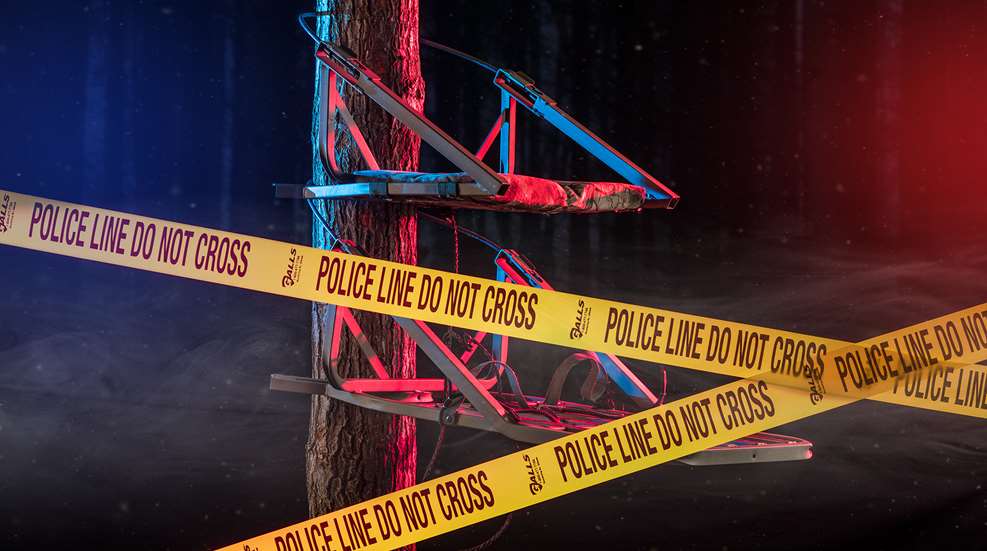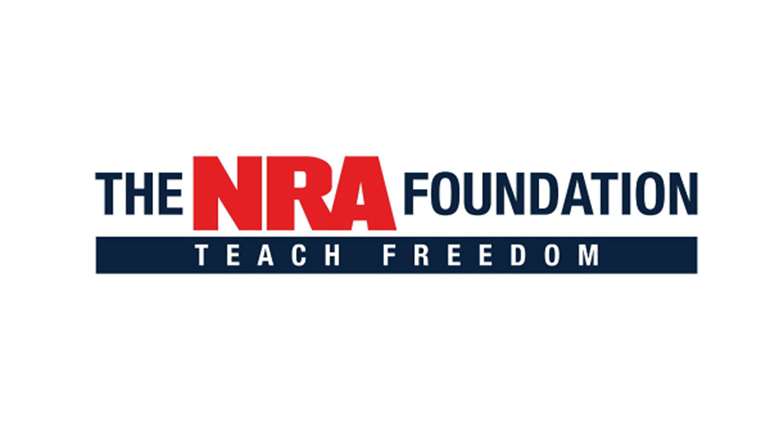
Trail-camera photos showed Ryan Giefer walking toward his treestand at 3:51 p.m. on Nov. 3, 2021, roughly seven hours before searchers found him face down on the ground, dead from severe head injuries.
Giefer, 32, of Waupaca, Wisc., was bowhunting a friend’s property northeast of town. The police report noted his bow and camo backpack hanging above his treestand, which was 20 to 25 feet off the ground. Legal shooting hours that day ended at 5:42 p.m.
No one will ever know how or when Giefer fell in those 111 minutes between the trail-cam photos and last light. Nor will we ever know specifics about his gear, its condition or how he used it. The police report didn’t mention whether his treestand was a ladder, hang-on, climber, saddle or homemade. Neither did the report mention if Giefer owned or wore a safety belt, chest harness or full-body harness. When contacted with a follow-up phone call, the on-scene officer didn’t know those specifics.
All that’s certain is that 32-year-old Ryan Giefer left behind a young wife, and three children ages 3 weeks to 5 years.
Lost in the Cracks?
And even though Giefer died while hunting, nothing about him or his fatal accident appeared in the Wisconsin Department of Natural Resources’ official 2021 “hunting incident summary.” That’s no oversight. State law requires the DNR to investigate all hunting-related shootings, whether with firearms or archery gear. The agency also investigates boating-related drownings, and ATV, UTV and snowmobile fatalities.
By legal jurisdiction, however, the Wisconsin DNR doesn’t investigate treestand deaths. Those tragedies are handled by local police or sheriff’s departments, even though their officers often don’t know hang-ons from ladder stands, or self-climbers from saddle stands. They can expertly investigate violent crimes and motor-vehicle accidents, but when tasked with treestand deaths they seldom note whether victims were wearing or using a full-body safety harness or other fall-restraint device.
“If we don’t track treestand injuries, why track gun-related injuries, which occur far less often? You’re ignoring the biggest elephant in the room.”
Wisconsin is hardly an outlier. Up to 73 percent of U.S. treestand accident reports don’t list that detail. In fact, few states besides New York strive to document treestand accidents systematically. New York started doing so in 2018, months after recording six treestand deaths during its 2017 hunting seasons. Five of those hunters weren’t wearing a full-body harness. The sixth wore one, but he wasn’t attached to the tree when he fell.
New York has documented two treestand fatalities since that tragic year, one in 2020 and the other in 2021. The New York Department of Environmental Conservation also documented 33 nonfatal treestand falls from 2018 to 2021, but that’s a minimum count because reporting still isn’t mandatory. Whenever possible, the New York DEC records the hunter’s age, hunting experience, type of stand, the fall’s likely cause and the county where it occurred. Of the 10 New York hunters reported falling from treestands in 2021, one was wearing a harness, but it wasn’t attached.
Likewise, few hospitals across the U.S. systematically report treestand accidents to state or local law-enforcement agencies. Even fewer hospitals document treestand falls if the victim received treatment and returned home with pain-killing prescriptions, and a fresh cast, sling or stitches. Therefore, research into treestand accidents typically focuses on more severely injured patients admitted to hospitals for further testing, observation and extensive treatment.
Ignoring the ‘Elephant’
That’s why Dr. Alan Lazzara, an emergency room surgeon at the Henry Ford Allegiance Health system in Jackson, Mich., studied the hospital’s records for treestand-related injuries from 2015 to 2019. Of the 33 treestand patients identified, 67 percent were treated and hospitalized, but 33 percent were treated and sent home without being admitted.
Lazzara’s follow-up research, published in October 2021, found some non-admitted patients suffered significant injuries that required therapy, outpatient surgery, time off from work and specialized treatment. Even so, because they weren’t hospitalized, they weren’t listed in the hospital’s trauma registry.
Lazzara’s team also documented the region’s average annual injury rate from treestand accidents was 5.73 per 10,000 hunters. That rate is slightly higher than rates cited in previous U.S. research, which showed hunters were far more likely to be hurt in treestand falls (4.59 per 10,000 hunters) than from gunshots (1.66 per 10,000 hunters).
“The point of our research is that it pays to track treestand accidents because they’re the No. 1 cause of injured hunters,” Lazzara said in an interview. “If we don’t track treestand injuries, why track gun-related injuries, which occur far less often? You’re ignoring the biggest elephant in the room. Reporting these accidents would require more work by law-enforcement officers, but we would learn so much more to help prevent similar tragedies.”
The closest thing to nationwide reporting are estimates from hospital data collected by the National Electronic Injury Surveillance System. NEISS data estimated 1,704 hunters required emergency room care for treestand injuries in 2021, down nearly 70 percent from 5,598 treestand cases in 2010. That’s good news, but Lazzara said it’s not the full story. Hospital emergency room data fuel the NEISS estimates, and don’t include hunters treated at clinics, doctors’ offices or urgent-care centers.
In his October 2021 study, Lazzara also notes that declining numbers of big-game hunters “temper” the NEISS data. The U.S. had 10.7 million big-game hunters in 2006, and a treestand injury rate of 5.45 per 10,000 hunters. In 2016, the U.S. had 9.2 million big-game hunters and a treestand injury rate of 4.98.
Outreach and Education
No matter what the actual numbers and reporting inconsistencies might be, Lazzara suggests wildlife agencies expand their education and information efforts. For instance, some states use billboards and/or social media to promote safety harnesses, and produce videos to supplement the basics taught in hunter-education classes.
“Improving treestand safety is more complicated than simply wearing blaze orange, clicking a seatbelt or buckling up when the warning bells chime,” Lazzara said. “It will require cultural shifts in attitudes. But we can’t make big changes without credible, well-sourced information from across the country. That’s why we need accurate, systematic reporting of all treestand accidents.”



































